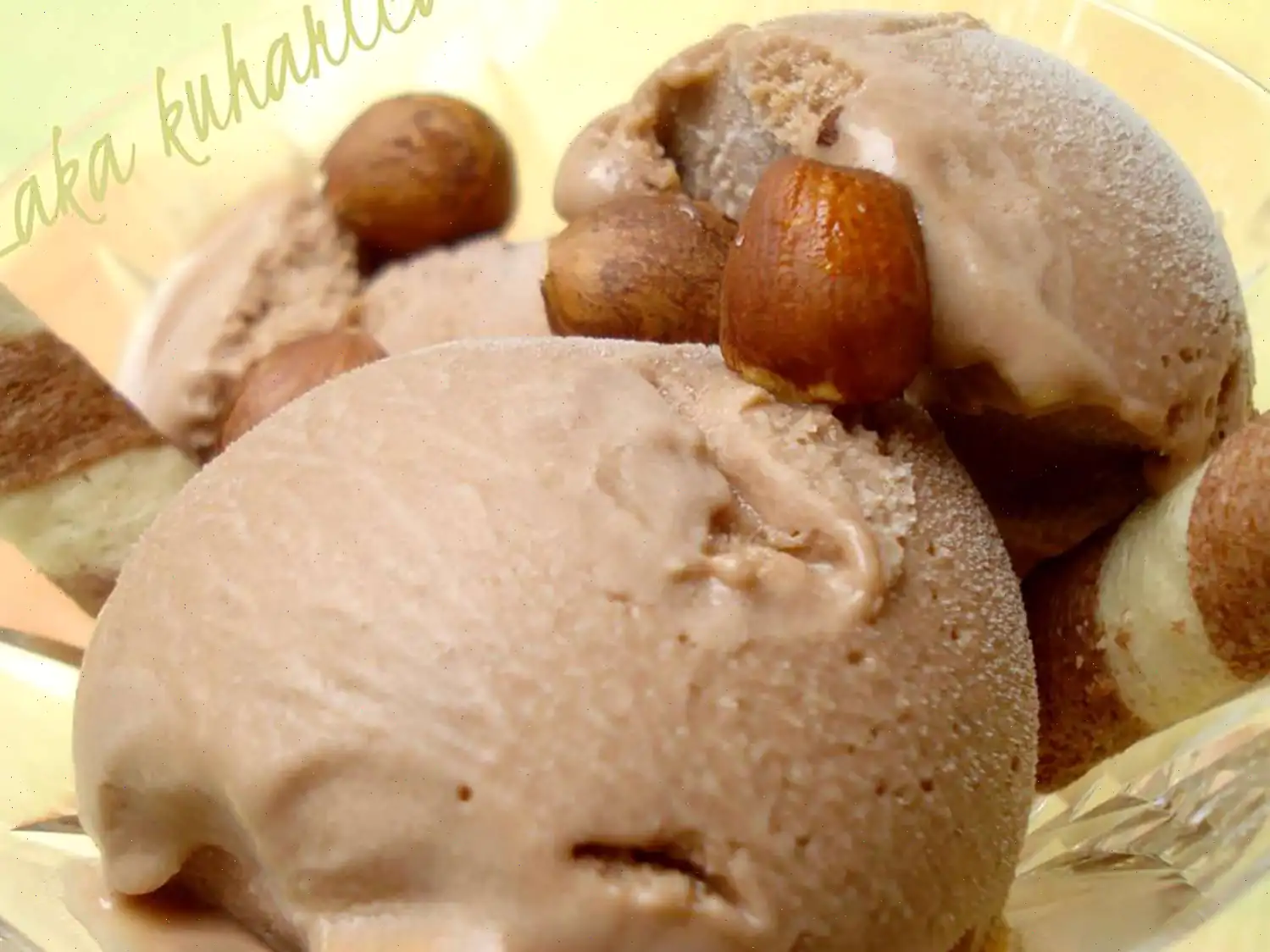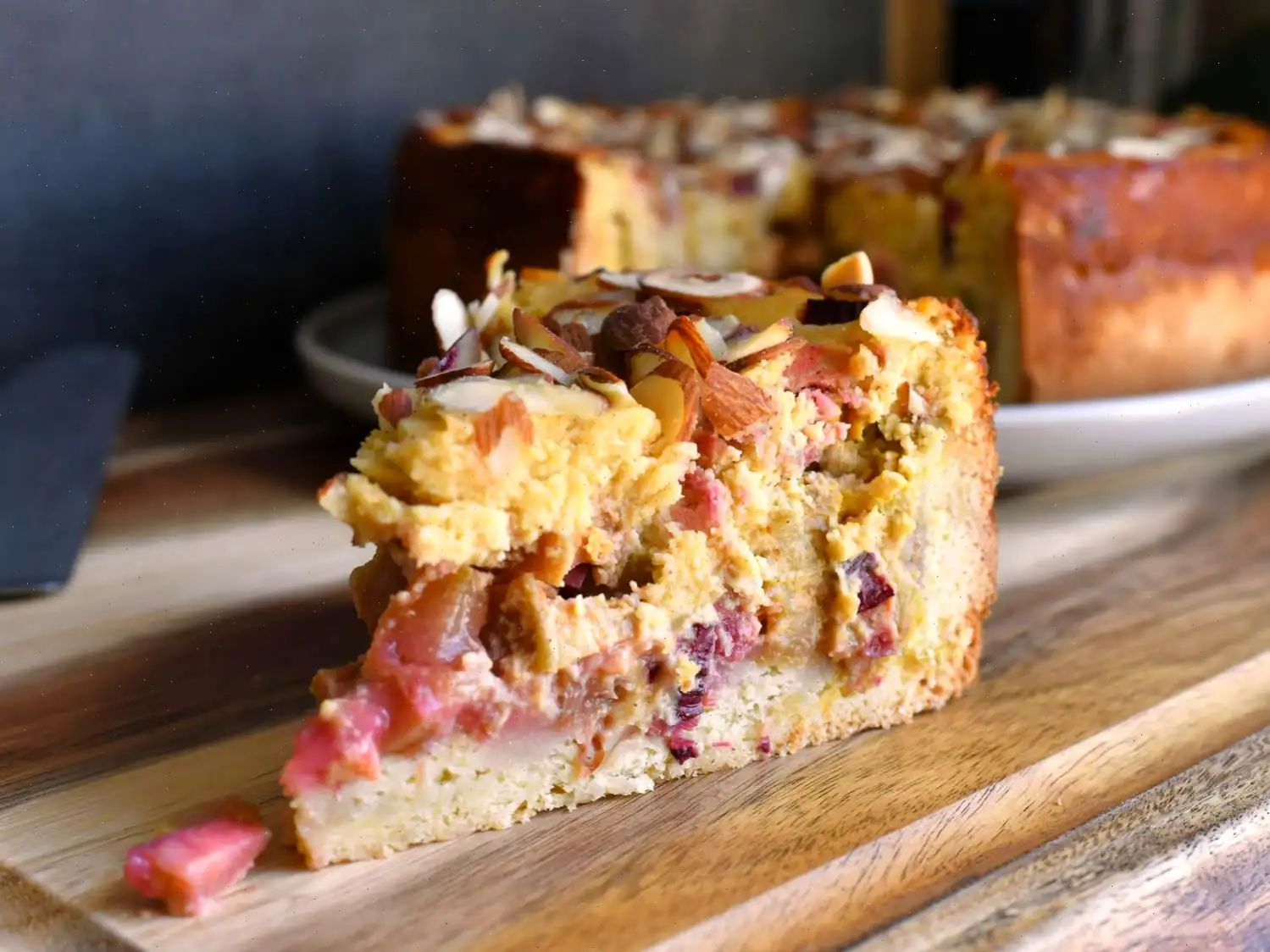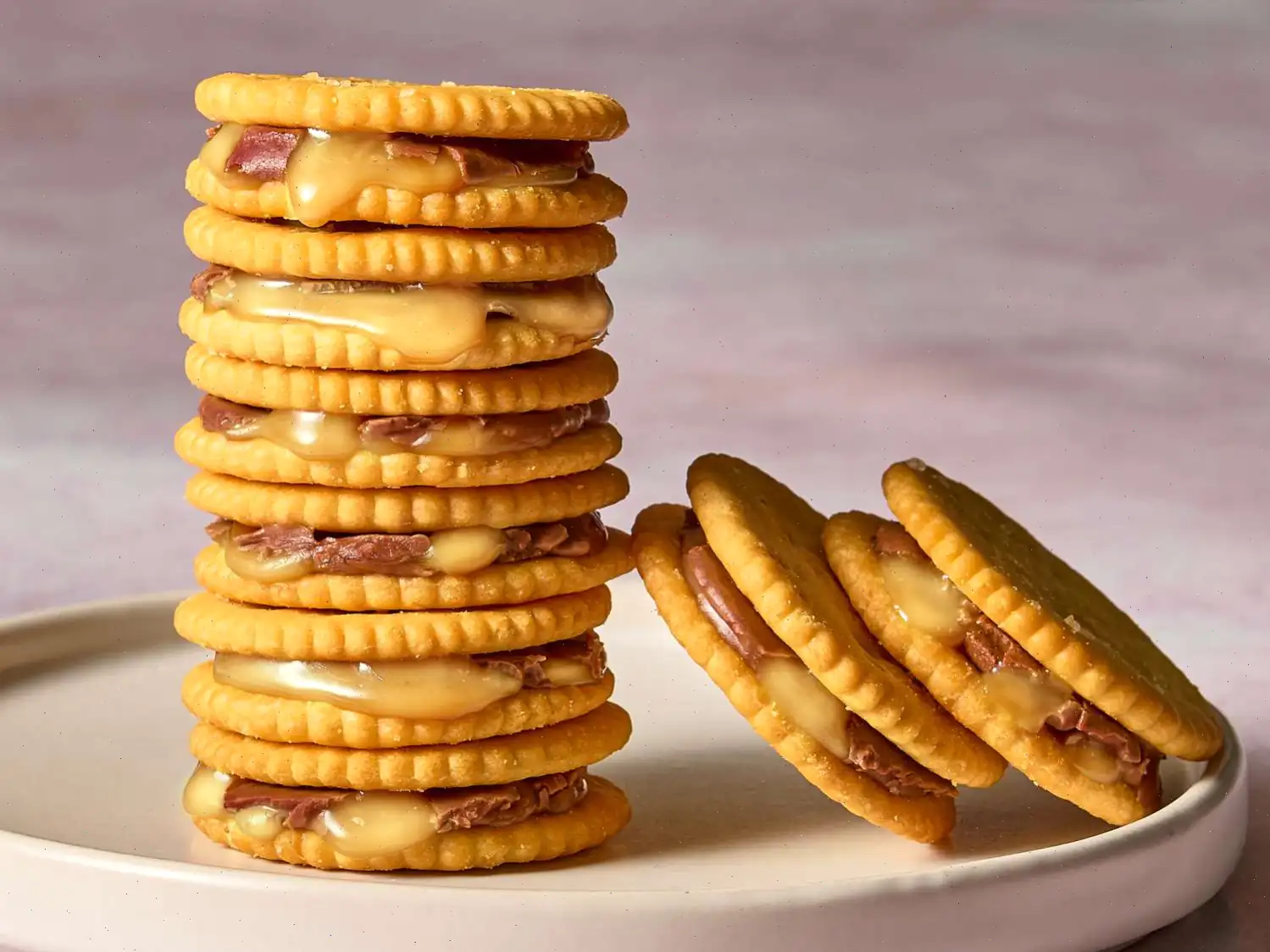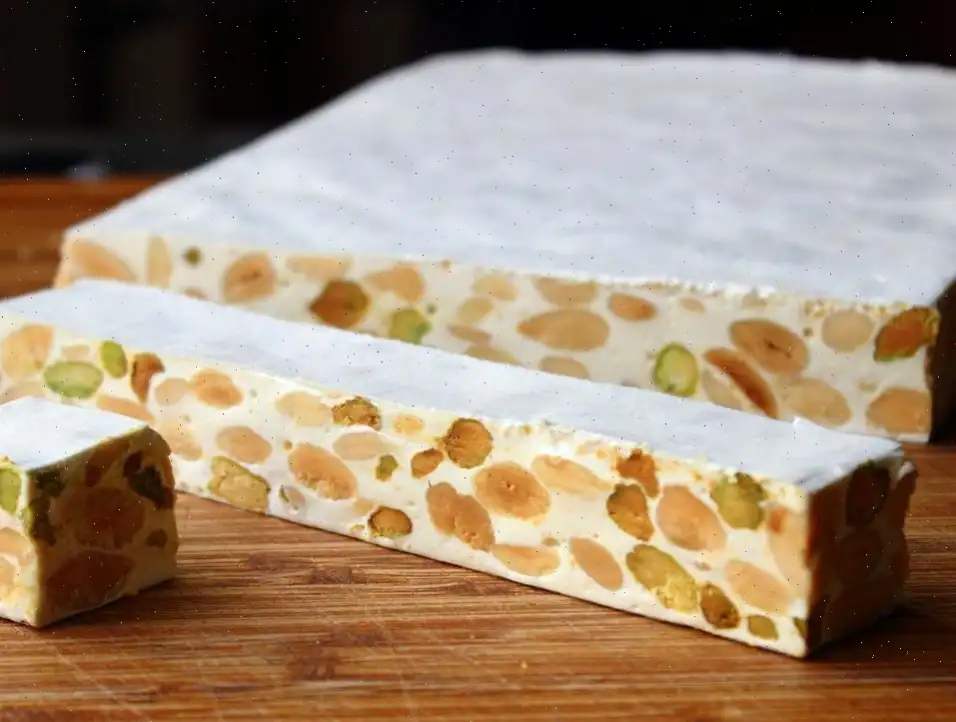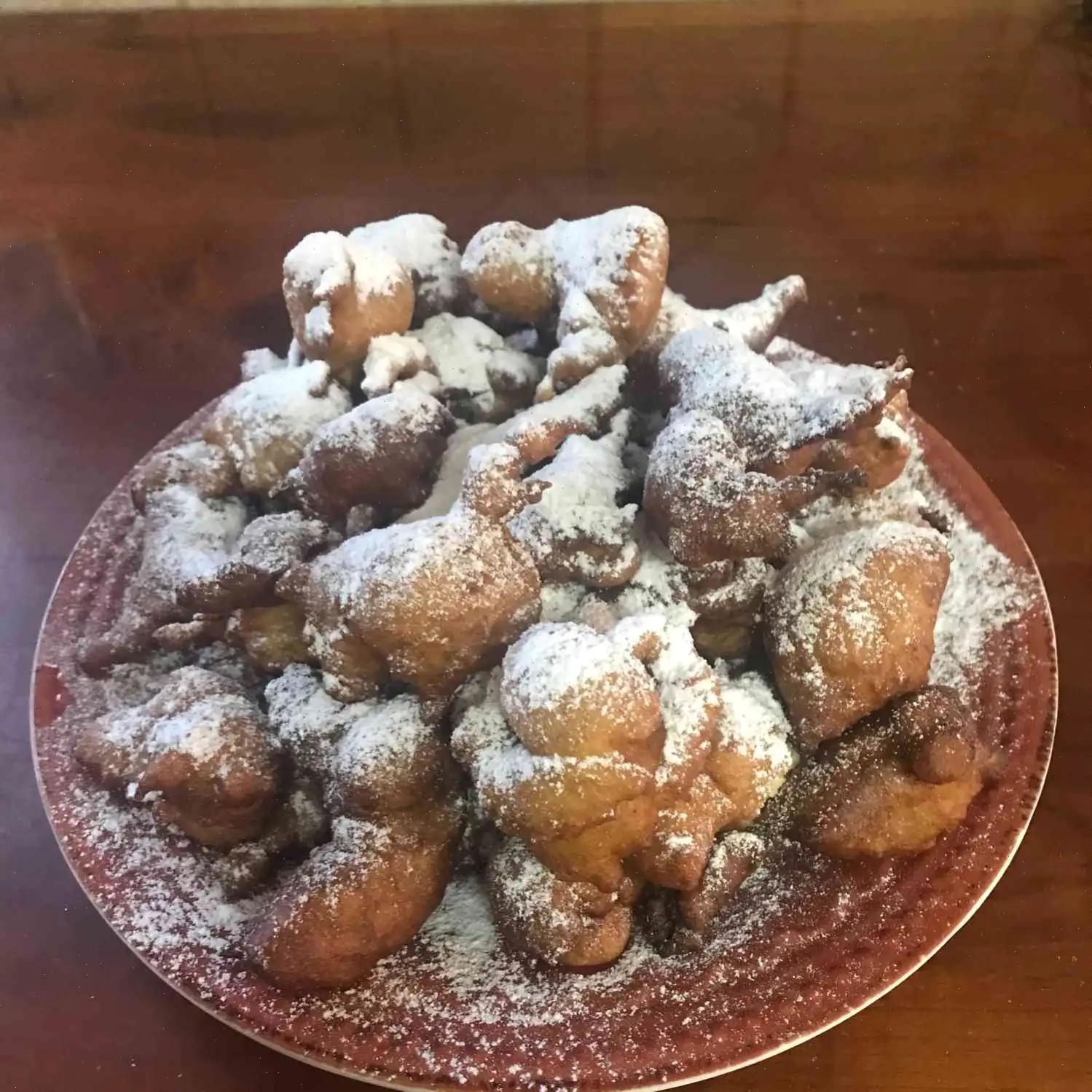
Nutella Ice Cream Recipe
Ingredients
- 2 cups whole milk
- 1 cup heavy cream, divided
- 3/4 cup sugar, divided
- 4 large egg yolks
- 1/2 teaspoon vanilla extract
- 1/2 cup cocoa hazelnut spread (such as Nutella)
- 1 ounce hazelnuts, crushed, or as needed for garnish
Directions
Step 1: Combine the milk, heavy cream, and 1/2 cup of sugar in a saucepan. Place it over medium heat and cook until the sugar dissolves completely, about 5 minutes.
Step 2: In a bowl, beat the egg yolks with the remaining 1/4 cup of sugar using an electric mixer. Continue beating until the mixture becomes thick and pale yellow, about 4 minutes.
Step 3: Gradually pour 1/2 cup of the warm milk mixture into the egg yolk mixture, stirring constantly to combine. Return this mixture to the saucepan.
Step 4: Cook the mixture over very low heat, stirring continuously. The custard should thicken enough to coat the back of a wooden spoon, which will take about 7 to 10 minutes.
Step 5: Once thickened, place a strainer over a bowl and pour the custard through to remove any lumps. Stir in the vanilla extract and cocoa hazelnut spread until fully dissolved.
Step 6: Allow the mixture to chill completely for about 1 hour.
Step 7: Pour the chilled custard into an ice cream maker and churn according to the manufacturer's instructions, typically 15 to 20 minutes.
Step 8: Transfer the churned ice cream into a plastic and place it in the freezer for at least 1 hour to firm up before serving.
Step 9: When ready to serve, top with crushed hazelnuts for extra crunch and flavor.
Cook's Note
For the best texture, remove the ice cream from the freezer about 5 to 10 minutes before serving. Serve in chilled bowls, and use a hot, dry ice cream scoop for the smoothest serving.
Nutrition Facts (per serving)
- Calories: 377
- Fat: 23g
- Carbohydrates: 35g
- Protein: 8g
- Sodium: 79mg
- Dietary Fiber: 1g
- Sugars: 33g
- Calcium: 130mg
- Iron: 2mg
- Potassium: 248mg
Percent Daily Values
- Total Fat: 30% Daily Value
- Saturated Fat: 72% Daily Value
- Cholesterol: 52% Daily Value
- Sodium: 3% Daily Value
- Total Carbohydrate: 13% Daily Value
- Dietary Fiber: 5% Daily Value
- Protein: 16% Daily Value
- Calcium: 10% Daily Value
- Iron: 8% Daily Value
- Potassium: 5% Daily Value
Note: Percent Daily Values are based on a 2,000-calorie diet. Your daily values may be higher or lower depending on your calorie needs. If you are following a medically restrictive diet, please consult your doctor or registered dietitian before preparing this recipe for personal consumption.

Nutella Ice Cream is a decadent dessert that combines the creamy, chocolatey goodness of Nutella with the smooth texture of homemade ice cream. This treat has gained worldwide popularity, especially among those with a love for hazelnuts and chocolate. But how did this rich and indulgent dessert come about, and what makes it stand out from other ice cream varieties? Let's explore the history, regional features, and unique aspects of Nutella ice cream.
History of Nutella Ice Cream
The origins of Nutella date back to the 1940s in Italy, where it was initially created as a solution to a shortage of cocoa during World War II. The product was developed by Pietro Ferrero, a pastry maker from Piedmont, and it became an instant hit. Nutella's creamy, nutty flavor made it a favorite spread for bread, but over the years, its versatility led to new culinary experiments, including ice cream. Nutella ice cream likely emerged as a natural evolution, tapping into the global love for both chocolate and hazelnuts.
Regional Features of Nutella Ice Cream
While Nutella is beloved worldwide, its popularity is particularly strong in Italy, where both the hazelnut spread and the concept of gelato originated. In Italy, Nutella ice cream is often sold alongside traditional gelato varieties in specialty shops. The dessert can be found in both creamy gelato parlors and home kitchens, where variations on the classic recipe can be seen. In other parts of Europe, Nutella ice cream is a popular summer treat, often paired with fresh fruits or nuts for added texture and flavor.
What Sets Nutella Ice Cream Apart?
Unlike traditional chocolate ice cream, Nutella ice cream has a unique hazelnut base. This gives the ice cream a richer, nuttier flavor that sets it apart from other chocolate ice cream variants. Nutella's distinct hazelnut and cocoa combination adds a smooth and velvety texture, which makes it a favorite among both children and adults. The use of Nutella in the recipe also creates a more indulgent, almost fudge-like consistency, which is a key point of difference from standard chocolate ice creams that rely on cocoa powder or melted chocolate.
Where Is Nutella Ice Cream Typically Served?
Nutella ice cream can be found at many ice cream shops, particularly in Italy, where it is sometimes served as part of a coppa di gelato (a type of sundae). It is also a common feature in buffets or dessert bars at restaurants that focus on Italian cuisine or modern European dining. At home, Nutella ice cream is a perfect treat for special occasions, family gatherings, or casual summer evenings. It is often paired with toppings like crushed hazelnuts, chocolate shavings, or whipped cream to enhance its flavor.
Interesting Facts About Nutella Ice Cream
- Nutella ice cream is often considered a gourmet dessert due to the high-quality ingredients used, such as heavy cream and real hazelnuts.
- In Italy, Nutella is often served as part of a gelato alla nocciola (hazelnut gelato), a traditional favorite that often includes Nutella as an ingredient in upscale gelaterias.
- The combination of chocolate and hazelnuts has been a favorite since the early 20th century, with Nutella being one of the most well-known commercial products to highlight this pairing.
- Nutella ice cream can be made with a variety of techniques, from traditional ice cream makers to no-churn recipes that require minimal equipment and effort.
You can listen to this recipe in AI audio format. Simply click the play button below to listen to the content in a format that suits you best. It’s a great way to absorb information on the go!


